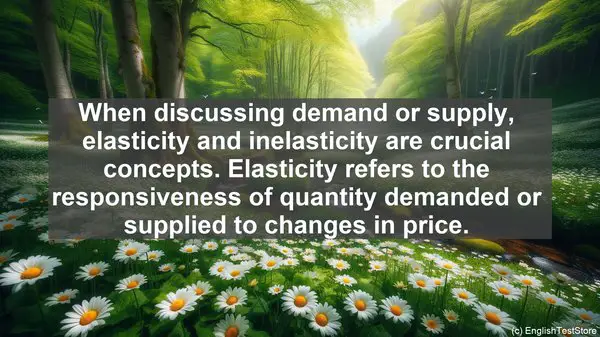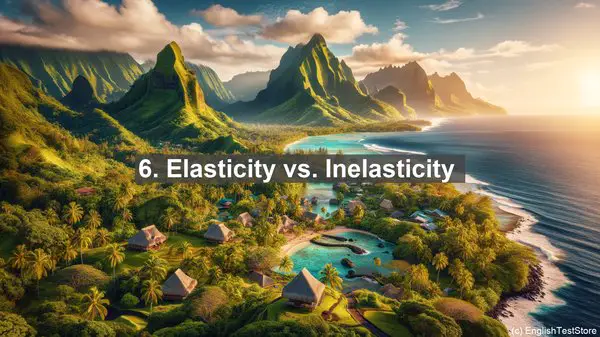Introduction
Welcome to today’s lesson on natural resource economics. In this lesson, we’ll be discussing the top 10 commonly confused words in this field. Understanding these terms is essential for a comprehensive grasp of the subject. So, let’s dive in!
1. Renewable vs. Non-renewable
The first pair of words that often causes confusion is ‘renewable’ and ‘non-renewable.’ Renewable resources, like solar or wind energy, can be replenished naturally. On the other hand, non-renewable resources, such as fossil fuels, are finite and deplete over time. It’s crucial to differentiate between the two when analyzing resource availability and sustainability.
2. Marginal Cost vs. Average Cost
Next, let’s clarify the difference between ‘marginal cost’ and ‘average cost.’ Marginal cost refers to the additional cost incurred by producing one more unit of a good or service. In contrast, average cost is the total cost divided by the quantity produced. Understanding these concepts aids in decision-making, as businesses assess the profitability of expanding production.

3. Externality vs. Market Failure
Moving on, ‘externality’ and ‘market failure’ are often used interchangeably, but they have distinct meanings. An externality is an unintended consequence of an economic activity that affects a third party. Market failure, however, refers to a situation where the market mechanism fails to allocate resources efficiently. Recognizing the difference is crucial for designing effective policy interventions.
4. Scarcity vs. Shortage
Scarcity and shortage are terms that are sometimes confused. Scarcity is a fundamental concept in economics, referring to the limited availability of resources relative to their demand. Shortage, on the other hand, is a temporary situation where demand exceeds supply. While scarcity is inherent, shortages can be resolved through various mechanisms, such as price adjustments.

5. Gross Domestic Product (GDP) vs. Gross National Product (GNP)
GDP and GNP are often used as indicators of a country’s economic performance, but they differ in scope. GDP measures the value of all goods and services produced within a country’s borders, regardless of the producer’s nationality. GNP, on the other hand, includes the value of production by a country’s residents, both domestically and abroad. Understanding these metrics provides insights into a nation’s economic activities and their global impact.
6. Elasticity vs. Inelasticity
When discussing demand or supply, elasticity and inelasticity are crucial concepts. Elasticity refers to the responsiveness of quantity demanded or supplied to changes in price. If a small price change leads to a significant shift in quantity, the demand or supply is elastic. Inelasticity, on the other hand, indicates a limited response to price changes. These concepts have implications for pricing strategies and revenue optimization.
7. Monopoly vs. Oligopoly
Monopoly and oligopoly are market structures with varying degrees of competition. A monopoly exists when a single firm dominates the market, controlling prices and supply. Oligopoly, on the other hand, refers to a market with a few dominant firms. While both structures limit competition, the dynamics and implications differ. Recognizing the market structure is essential for understanding pricing and market behavior.
8. Inflation vs. Deflation
Inflation and deflation are terms used to describe changes in the general price level. Inflation refers to a sustained increase in prices over time, eroding purchasing power. Deflation, on the other hand, is a sustained decrease in prices. Both have implications for economic stability and policy. Central banks often aim for a moderate level of inflation to support economic growth.
9. Opportunity Cost vs. Sunk Cost
Opportunity cost and sunk cost are concepts used in decision-making. Opportunity cost refers to the value of the next best alternative foregone when making a choice. Sunk cost, on the other hand, is a cost that has already been incurred and cannot be recovered. Considering opportunity costs helps in assessing the true cost of a decision, while sunk costs should not influence future choices.
10. Fiscal Policy vs. Monetary Policy
Lastly, let’s differentiate between fiscal policy and monetary policy. Fiscal policy refers to the government’s use of taxation and spending to influence the economy. Monetary policy, on the other hand, involves the central bank’s management of the money supply and interest rates. Both policies aim to achieve macroeconomic objectives, such as stable prices and high employment.
